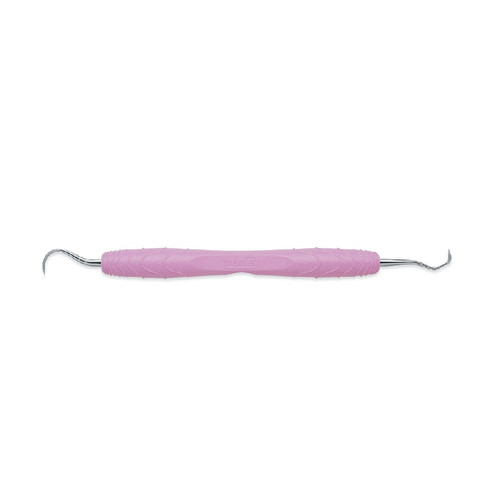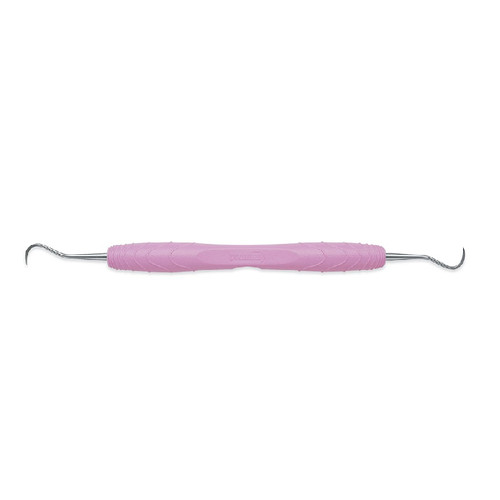- Double-ended hygiene instrument used by dental professionals for scaling and removing calculus from all supra- and subgingival tooth surfaces
Applications:
- Universal scaling:
- This instrument can be used for the effective removal of calculus deposits from all tooth surfaces
- Targeted cleaning:
- The H5/33 tips provide access to different tooth surfaces and areas of calculus build-up, making it effective for general and targeted cleaning
- Posterior scaling:
- One end of the instrument, the H5, is a sickle scaler designed for scaling posterior teeth
- Subgingival debridement:
- The fine, sharp tips are also suitable for removing calculus from below the gumline
Features:
-
H5/33 design:
- H5 Hygienist tip:
- Purpose:
- This sickle-style tip is designed for the precise removal of supragingival and subgingival calculus, mainly from anterior teeth
- Access:
- It features a thin blade that allows for easy access into narrow anterior interproximal and cervical regions
- Performance:
- It is known for being sharp and fine, enabling the clinician to work with precision and minimal effort
- #33 Jacquette tip
- Purpose:
- This straight, thin blade is particularly effective for removing heavier calculus deposits
- It is a versatile tip used for both anterior and posterior scaling, but it excels in accessing interproximal and cervical areas of anterior teeth
- Design:
- It is a straight sickle blade that tapers to a point
- Blade width:
- The blade width is typically around 0.9mm, making it suitable for scaling
- SmartSharp technology:
- The tips are made from heat-treated, cryo-hardened 440A stainless steel
- This technology ensures the tips maintain a sharp edge and precise angle for greater efficiency and less repetitive motion for the user
- Autoclavable:
- The durable polymer handle is designed to withstand multiple autoclaving cycles, ensuring longevity and proper infection control
- Designed for control:
- The handle and tip design allow the user to easily maintain control during instrumentation with less pressure required







